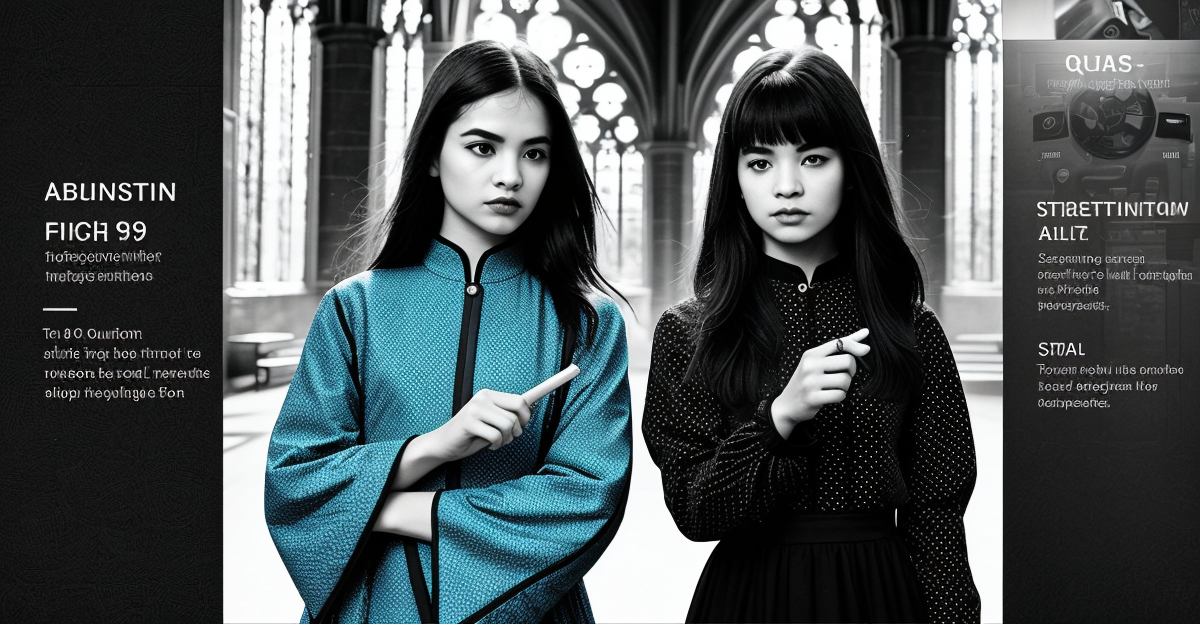
Gen Z: digital natives, trendsetters, and the generation shaping our future. Beyond the memes and TikTok dances lies a fascinating phenomenon: their meticulously crafted aesthetics. From the comforting simplicity of Cottagecore to the intellectual allure of Dark Academia, these visual identities are more than just pretty pictures. Are they a genuine rebellion against a chaotic world, or simply hyper-curated self-expression amplified by the internet? **Aesthetics as a Response to Overwhelm & Uncertainty** Let’s face it: the world feels overwhelming right now. Political divides, climate anxiety, economic instability – it’s no wonder Gen Z is drawn to aesthetics that offer an escape. Cottagecore, with its idyllic visions of rural life, baking bread, and hand-stitched quilts, provides a comforting retreat from digital overload. Dark Academia, with its romanticized portrayal of intellectual pursuits, libraries, and gothic architecture, offers a sense of structure and purpose. These aren’t fleeting trends; they’re carefully constructed realities offering solace in a turbulent world. Think about it: when everything feels out of control, meticulously organizing your bookshelf according to Dark Academia principles can be incredibly empowering. Creating a calming, Cottagecore-inspired bedroom provides a much-needed sanctuary. It’s about carving out a small space of control, beauty, and predictability in a world that often feels overwhelming. **Hyper-Curated Self-Expression: The Performance of Identity** The internet, of course, plays a massive role. Social media platforms like Instagram and TikTok have become stages where individuals carefully curate and perform their identities. The pressure to present an aesthetically pleasing and consistent online persona can be intense. While self-expression is vital, this raises questions about authenticity. Are we truly expressing ourselves, or are we performing for an audience, chasing likes and validation? The commodification of aesthetics further complicates this. Brands are quick to capitalize on these trends, offering products and experiences that align with desired visual identities. Want to embrace Cottagecore? Buy this floral dress! Yearning for Dark Academia vibes? Grab this vintage-inspired journal! It’s easy to get caught up in the consumerism, blurring the lines between genuine self-expression and simply buying into a trend. **The Algorithmic Echo Chamber: Authenticity vs. Virality** Social media algorithms significantly shape and amplify aesthetics. Platforms prioritize content that generates engagement, which often leads to the homogenization of trends. If Cottagecore is trending, the algorithm will show you more Cottagecore content, creating an echo chamber where alternative aesthetics become less visible. This creates a tension between expressing genuine personal preferences and creating content optimized for engagement and virality. Do you stick with your unique, slightly offbeat aesthetic, or do you adopt the latest trends to gain more followers? The pressure to conform can be intense, potentially stifling creativity and individuality. Consider the proliferation of “clean girl” aesthetic tutorials promising the same effortless look. Is this truly empowering, or just another form of pressure to conform to an unrealistic beauty standard? **The Blurring Lines: Rebellion and Self-Expression Intertwined** Despite the potential pitfalls, aesthetics can also be powerful tools for challenging societal norms and expressing political or social views. Fashion, in particular, has always been a form of protest. Think of the punk movement, or the more recent use of specific clothing and accessories to signal support for social justice causes. A carefully chosen outfit can be a powerful statement. However, it’s crucial to recognize that even seemingly harmless aesthetics can inadvertently reinforce existing power structures. For example, certain beauty standards associated with popular aesthetics can perpetuate unrealistic expectations and contribute to feelings of inadequacy. It’s a complex interplay of individual expression and broader societal forces. Ultimately, Gen Z’s aesthetics are a complex blend of escapism, self-expression, and algorithmic influence. It’s difficult to definitively categorize them as solely rebellion or curated performance. They’re constantly evolving, reflecting the ever-changing landscape of the internet and the world around us. But here’s the big question: **Do you think these aesthetics are primarily a genuine form of self-expression, or are they too heavily influenced by social media and consumerism?** We’d love to hear your thoughts! Share your perspective in the comments below, and don’t forget to follow us for more insights into the world of Gen Z and the internet! Tag someone who needs to see this!
Source: Pete Hegseth’s Signal Scandal Spirals Out of Control



